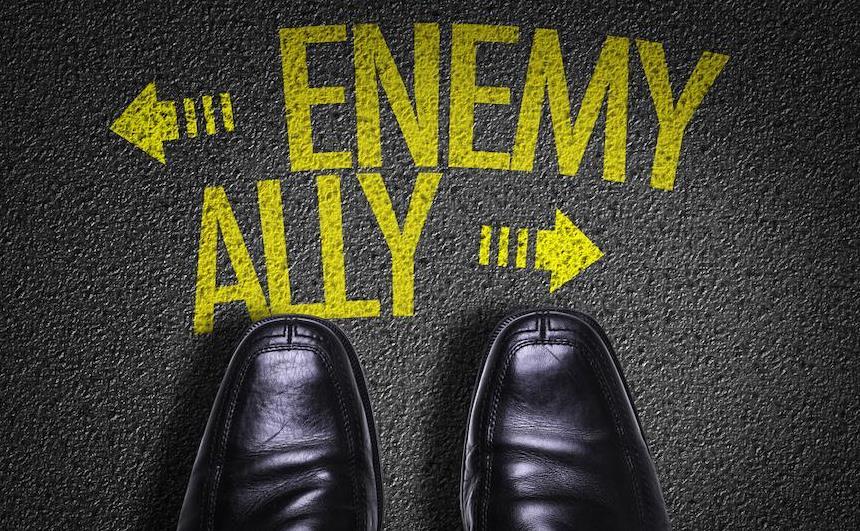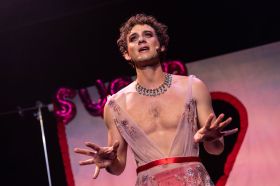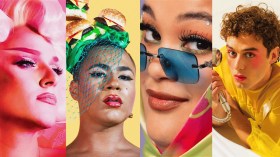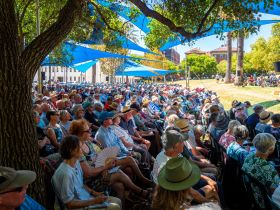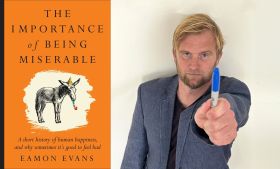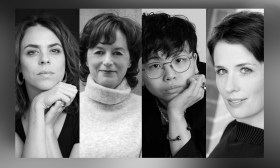In recent years, policy makers, managers of Australia’s major arts organisations, artists, and critics have all acknowledged the need to make the arts more diverse, inclusive, and accessible.
It is an ambition that – most agree – can only be achieved by making sure a suitable proportion of the leadership roles in Australia’s arts organisations are held by diverse artists.
In my own field of practice in disability arts this is not a new idea.
In the first research towards an Australian arts and disability strategy, funded by the Australia Council in 1995, Des Walsh and Juliet London lamented the lack of disabled artists in ‘gatekeeper’ roles.
Twenty-five years later, progress has been made. We have seen research, reports, policies, dedicated funding programs, mentorships, and other initiatives. The industry is now aware of the need to address poor representational practices, and poor industrial relations practices, and bring disabled artists into leadership roles – not just in the venues where art is presented, or places where art is made, but the executive offices, boardrooms, and funding agencies where decisions about programming are made.
However, neither this increased awareness – nor the increasingly vocal claims of commitment to this cause that accompany it – have resulted in swift system wide change.
The first National Arts and Disability Strategy (2009), the recent consultation towards a new National Arts and Disability Strategy (2018-2019), and all the Australia Council and Department of Communication and the Arts data between then and now, suggest change has been slow. We have yet to ensure disabled artists get to work as much as their peers, or earn as much as their peers, let alone that they are represented in leadership roles, either in disability arts organisations, or across the wider spectrum of arts organisations.
The situation for other diverse artists is similar. In the recent Shifting the Balance report (2019), for example, Diversity Arts Australia found that only 9% of cultural leaders identify as culturally and linguistically diverse. The Australia Council’s Women In Theatre report (2012), produced after (another) media controversy about lack of representation of women in directorial roles, found only 30%-40% of productions by Australia’s major performing arts companies feature women in creative leadership positions.
Read: On Being an ally for diversity
The industry clearly needs new approaches to tackle this gap between the rhetoric and the reality, when it comes to disabled, culturally and linguistically diverse, indigenous, queer, and otherwise diverse arts leaders.
A possibility that has emerged in my recent research is the development of more scaffolded, sophisticated approaches to allyship, as the practice by which those who occupy positions of privilege support and hold space for disabled and otherwise diverse arts leaders to emerge.
There is, to date, no theory articulating the social, professional, and aesthetic dimensions of allyship in disability arts.
There is however a theory of allyship in the social and educational science literature, and in the many activist manifestos, websites, and training programs based on that literature, we can draw on.
Allyship in action
The message underpinning this broader body of theory, and the programs built on it, is clear. Becoming a true ally is not just about saying ‘I am an ally’ or ‘I feel a sense of allyship.’ It is a difficult, demanding process. It requires that one reflect on the systemic basis of one’s own privilege, then listen, learn about, and validate the realities of non-privilege that people with disabilities describe. It requires that one develop specific skills, to be deployed in partnership with specific people, in specific contexts, to achieve specific changes. Most critically, it requires that one accept a reduction in one’s own status, in order to advance another’s status, and hold open a space for them to think, speak, act, and create change.
This approach has potential to help disabled and otherwise diverse artists name, label, discuss, and start addressing ‘problematic’ ally behaviours that frustrate the emergence of a new generation of disabled arts leaders. Behaviours that are all well known, but, in my experience, discussed mainly behind closed doors, in disability-only sessions, for fear of offending well-meaning supporters, limiting future job prospects, or unleashing a storm ‘ablesplaining’ about why one is misinterpreting a situation or demanding too much in response. An experience affirmed when I have discussed my research with peers, both at the recent Arts Activated Arts and Disability Conference here in Australia, and at similar conferences overseas.
Read: Leading for change – who is leading disability arts?
The first problematic ally behaviour this approach might help name and address is that of the ‘optical’ or ‘performative’ ally. This is artsworker who will ‘like’ a campaign on Facebook, for example – but will not do the work to put disability access requirements in place, let alone employ a disabled artist, or step back to allow a disabled artist to play a disabled role in a show if it means they miss out.
The second problematic ally behaviour this approach might help name and address is that of the ‘ally of convenience.’ This is the artsworker who will join the field, with a stated desire to empower disabled and otherwise diverse artists, without giving them artistic or financial credit, or having a plan to transition to giving them greater artistic or financial credit – or even stay in the field once funding moves elsewhere.
The third problematic ally behaviour this approach might help name and address is that of the ‘pseudo’ ally. This is artsworker who, when told disabled or otherwise diverse artists are not comfortable with certain behaviours – the above or others – will gaslight those they claim to empower, telling them they do not understand, or are overreacting, or need to forgive patterns of behaviour as though they were simple one of mistakes or miscommunications.
The other problematic ally behaviours this approach might help address are, of course, as many and as varied as the artists working in Australia’s industry. The white disabled artist, who thinks disabled artists of colour’s experience must match their own. The parent, partner, sibling, or carer who thinks they have special insight, and thus special permission to speak for the disabled artist the support, in a way that other allies do not.
In an industry reliant on relationships, dealing with problematic behaviours is difficult for any artist. It is more difficult for disabled and otherwise diverse artists, who deal with barriers to employment beyond those faced by their peers. A starting point for any would-be ally, then, might be to take up burden of beginning the conversation about better allyship – and the self-reflective process that comes of it – themselves. By asking the question: am I a good ally? Though challenging, asking this question that has the potential to be transformative, for the individual, and for the industry as a whole. With it, we may start to see swifter improvement in our ability to support and hold space for a new generation of leaders, who have the ability to build the vibrant arts sector we all want to see. Without it, we may be destined to another decade or more wondering why our reality so often remains so wide of our rhetoric.
This article is based in part on research undertaken while writing “Advocacy, Allies, and ‘Allies of Convenience’” recently published in Helena Grehan and Peter Eckersall’s The Routledge Companion to Theatre and Politics (Routledge 2019).

